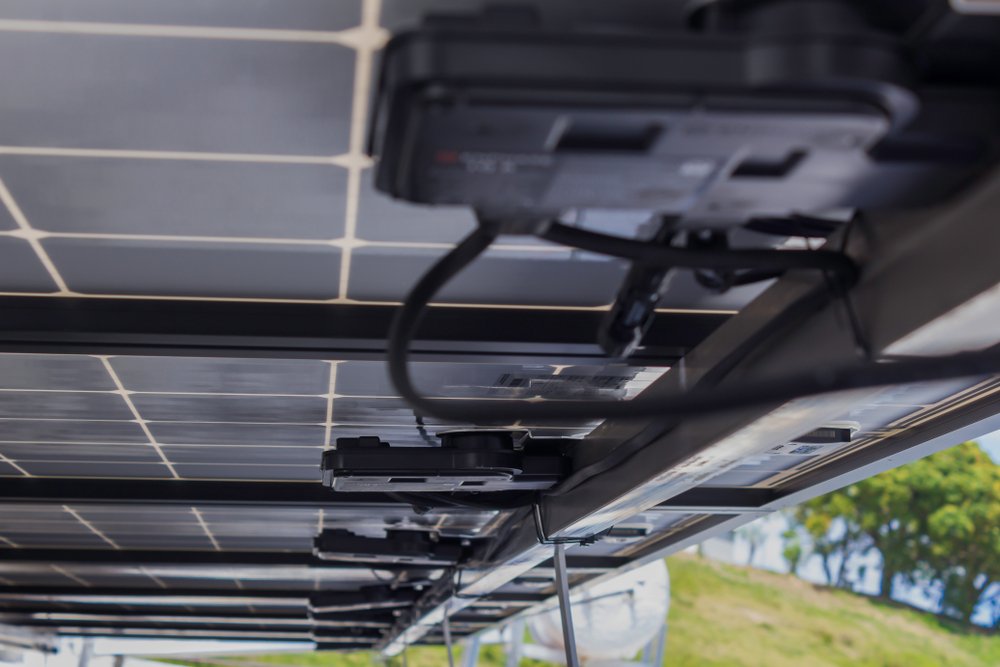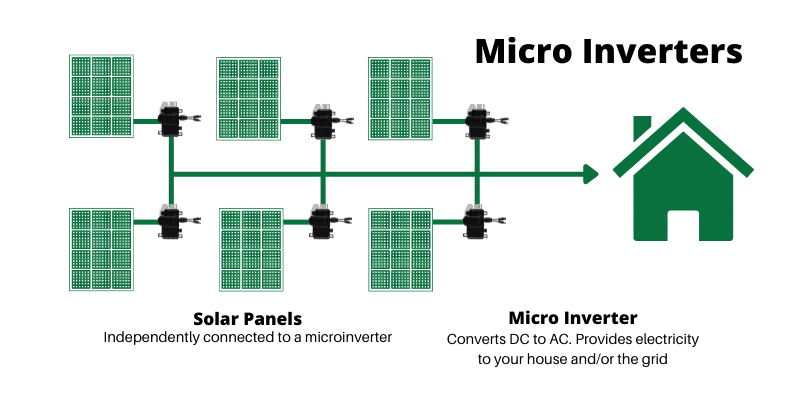Solar inverters are the most critically important components of the solar power system, which perform the DC to AC electricity conversion. One of the main reasons for the conversion process is that most of our household appliances and other equipment in businesses use the AC (Alternating Current). Hence, these solar inverters convert the DC (Direct Current) collected with the help of solar panels and transform it into AC power.
Also, there are different types of inverters, which include — string inverters, power optimizers, and microinverters. And, each of these contributes to system efficiency in its unique way by converting 95% to 98% efficiency of the DC electricity into AC electricity. This is because no inverter is 100% efficient and there will always be some energy loss during the conversion.

But wait! Before you learn how to choose the right microinverter, you must know when should you buy a microinverter. For that, you need to know what exactly is microinverters and how they work. Also, the advantages and disadvantages of microinverters along with other factors should be considered before purchasing.
What Are Microinverters? How Do They Work?

The main difference comes where the DC to AC conversion in a string inverter happens for an entire array or string at a central inverter. Whereas, the conversion process in the microinverter is performed at each solar panel.
Since microinverters work on a per-panel basis, the efficiency of each solar panel is enhanced. Also, these microinverters are categorized as Module-Level Power Electronics (MLPE) that promote the individual nature of performance at its peak level. As a result, the other panels performance doesn’t get affected due to the failure of a single solar panel. A microinverter system generates upto 25% additional energy from the same number of panels when compared to string inverters as each panel operates at its maximum output. You can read difference between microinverter and string inverter to decide which one is right for you.
Most importantly, microinverters are the best choice for installations despite shading issues or multiple roof orientations. This is because they can perform at their peak efficiency on roofs with complex designs, fluctuating angles, or shading effects. Especially, the optimal performance allows each panel to function independently.
Advantages of Microinverters
These are the following benefits of microinverters:
- Reduced system shutdown risk: If there is any fault in the microinverter, the only solar panel attached to it gets shut down automatically rather than the whole system.
- Flexibility in system sizing: The higher flexibility in the system design allows easy installation of microinverters in harsh environments by ensuring the correct placement of the panels and maximized energy production, especially in areas where the shading or panel orientation is completely inconsistent.
- Enhanced power output: The energy production is optimized based on varying environmental conditions of each panel in your solar system to contribute maximum power output.
- Panel-level monitoring for easy troubleshooting: Through microinverters, panel-level monitoring has become simpler, and you can track the performance of each solar panel through the real-time data provided. This level of accuracy makes it straightforward to identify and troubleshoot the existing issues efficiently, guaranteeing solar energy systems’ long-term performance and success rate.
- Longer lifespan with warranties matching solar panels: Typically, the average lifespan of microinverters is upto 25 years, thereby ensuring its longevity. But, you should choose the best quality and reputed brand in the market that should cover the cost of energy production of your system to guarantee that it will function correctly and safely. Here is also more detail about solar inverter warranties.
- Ease of installation and system expansion: Microinverters offer an infinite amount of expansion opportunities, especially if you plan to install only a single portion of your electrical needs. This helps in easier installation and minimizes expansion costs compared to the string inverter which requires an upgrade to accomplish the enhanced energy demands.
- Rapid shutdown capability for safety: Since the conversion of DC power from higher to lower voltage takes place, the rapid shutdown features enable safer AC power which results in a voltage drop of upto 80V within 30 seconds.
Disadvantages of Microinverters
These are the major drawbacks of microinverters:
- Higher upfront cost: Compared to the standard string inverters, the microinverters require a huge upfront cost which is a huge concern for consumers who are planning for larger installations on a limited budget.
- Power clipping issues: Power clipping refers to the power losses within the microinverter. While purchasing a solar panel system, it is important to verify that the power output rating of your microinverter is less than the solar panel. For example, suppose your solar panel produces more electricity than the microinverter’s conversion capacity. In that case, clipping occurs, and your system won’t be able to maximize the benefits of the full power output of the solar panel.
- Increased potential for equipment failure: Microinverters have maximum failure points due to increased components. Since each panel is equipped with a separate inverter, there are higher chances of equipment failure. However, you can reduce the risk by knowing the common solar inverter failure causes and their solutions.
- Challenging replacement for rooftop installations: Microinverters are mounted on the rear side of the solar panels, which means the installation process is done on the roof. At times, the type of roof, materials used, and structural strength pose the toughest challenges on low-sloped or unevenly shaped roofs. Additionally, maintaining microinverters on such roofs becomes more difficult and sometimes adds additional cost if your warranty doesn’t cover the labor expenses.
How to Choose the Right Microinverter?
These are the four main important factors you should consider while selecting the best microinverter:
1. Efficiency: The efficiency of a microinverter varies similar to a solar panel. This means that the higher the efficiency rate of the microinverter, the greater the solar energy production and the less power lost during the production process.
2. Price: Since microinverters are higher in price than traditional string inverters due to their higher efficiency, a solar system’s cost-effectiveness is an important factor to consider.
3. Size: The microinverter should be the same size as your solar panel system to handle maximum power output.
4. Monitoring systems: The advanced monitoring system of your microinverter helps to track the performance of your solar panel which requires an active internet connection.
5. Warranty: The longer warranty period offered by the manufacturer promises to provide peace of mind to all users so that it covers the repair, replacement, or reimbursement due to sudden equipment failure or power degradation.
When Should You Buy Microinverters?
Certain installation conditions such as shading, roof complexity, scalability, and advanced monitoring systems should be considered as the best option while purchasing microinverters.
Microinverters can provide faster payback and savings over time with an impressive threshold efficiency of upto 99%, longer warranties of upto 25 years, reduced maintenance costs, and an optimized conversion process from DC power to AC power.
Alternatively, a traditional inverter can prove to be a better and cost-effective option when compared to microinverters only if there are no shading issues and the panels are mounted on a large scale can be a great choice. Also, for large-scale commercial projects, centralized string inverters still dominate based on competitive pricing and economic range.
Ray is an avid reader and writer with over 25 years of experience serving various domestic and multinational private and public energy companies in the USA.

